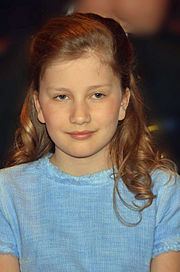 | ||
Past holders Henry I, Duke of Brabant, Henry II, Duke of Brabant | ||
Leopold duke of brabant
The Duke of Brabant was formally the ruler of the Duchy of Brabant since 1183/1184. The title was created by the German Emperor Frederick Barbarossa in favor of Henry I of the House of Reginar, son of Godfrey III of Leuven (who was Duke of Lower Lotharingia at that time). The Duchy of Brabant was a feudal elevation of the since 1085/1086 existing title of Landgrave of Brabant. This was an Imperial fief which was assigned to Count Henry III of Leuven shortly after the death of the preceding Count of Brabant, Count Palatine Herman II of Lotharingia (born 20 September 1085). Although the corresponding county was quite small (limited to the territory between the rivers Senne and Dender) its name was applied to the entire country under control of the Dukes from the 13th century on. In 1190, after the death of Godfrey III, Henry I also became Duke of Lotharingia. Formerly Lower Lotharingia, this title was now practically without territorial authority, but was borne by the later Dukes of Brabant as an honorific title.
Contents
- Leopold duke of brabant
- House of Reginar House of Leuven
- House of Burgundy
- House of Habsburg
- House of Bourbon
- House of Saxe Coburg and Gotha
- Legislation
- References
In 1288, the Dukes of Brabant became also Duke of Limburg. The title fell to the Dukes of Burgundy in 1430. Later on, it followed with the Burgundian inheritance until the French Revolution, although the northern part of the territory of Brabant was actually governed by the United Provinces during the 17th and 18th century (see Generality Lands).
House of Reginar (House of Leuven)
Counts of Leuven, Counts of Brussels and Landgraves of Brabant:
Counts of Leuven, Counts of Brussels, Landgraves of Brabant, Margrave of Antwerp and Dukes of Lower-Lorraine:
Dukes of Brabant and Dukes of Lothier:
Dukes of Brabant, Dukes of Lothier and Dukes of Limburg:
House of Burgundy
Dukes of Brabant, Dukes of Lothier and Dukes of Limburg:
House of Habsburg
House of Bourbon
House of Habsburg
House of Saxe-Coburg and Gotha
In the current Kingdom of Belgium, the title of "Duke of Brabant" revived as dynastic title at the court, and is traditionally assigned to the oldest son/daughter of the sovereign (even though the province of Noord-Brabant, part of the historical duchy, is now part of the Netherlands and has been so since 1648).
The oldest Son/daughter becomes automatically the duke/duchess of Brabant when his/her father becomes King of the Belgians, there is no ceremony or formal oath that he new duke needs to pass. When the Duke of Brabant loses his father, or when he abdicates, his title goes to the next in line, and he becomes the new King of the Belgians. Unlike the office of King of the Belgians, you do not have to reach the age of 18 to become Duke of Brabant. However, if a Duke of Brabant does not reach the age of 18, he cannot ascent to the Throne of Belgium. When the prince becomes duke of Brabant, this title takes precedence of the other titles: Prince(ss) of Belgium. When the Duke of Brabant marries legally, after permission of the King, his wife becomes automatically Duchess of Brabant.
The last Duke of Brabant became King in 2013, and passed the title to his oldest child. The current Duchess, Crown Princess Elisabeth was in 2013 only 12 years old when she became duchess.
Legislation
Article 1, alinea 2, of the Royal Decree of 16 December 1840 says, since an amendment in 2001 : « The title of Duke of Brabant or of Duchess of Brabant will be worn, in future, by the Prince or the Princess, elder son or daughter of the King, and, if lacking, by the Prince or the Princess, elder son or daughter of the elder son or daughter of the King »
House of Bourbon
The title Duke of Brabant is one of the titles of the Spanish Crown,, which is occupied by a member of the House of Bourbon.
